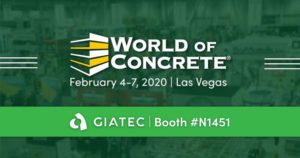Using Mushrooms to Repair Crumbling Infrastructure
There is no denying that as concrete ages it can start to crumble. Cracks and concrete corrosion can lead to weaker structures and in places like the United States and Canada where the majority of bridges, roads, and sidewalks are made of concrete, it can cause serious issues. Not only does the deterioration require complex repairs that are costly and time consuming, it can cause serious damage to infrastructure that can lead to failure.
The Advent of Bio-concrete
Self-healing concrete was first introduced by Hendrik Jonkers, a microbiologist at Delft University. As Jonkers was looking for a way to improve the strength and longevity of concrete, he discovered that adding limestone-producing bacteria to his concrete mix significantly improved its ability to retain strength over time. This naturally occurring bacteria is usually present near volcanos and is heat and cold resistant, making it ideal for use in concrete all over the world. Jonkers found that adding the bacteria to the building material brought it alive and gave it the ability to repair itself. It can lie dormant for 200 years and becomes active when in contact with water, which causes it to act similarly to the way bones in the human body self-regenerate and heal.
A New Form of Bio-concrete
Ning Zhang and a few others at Rutgers University in New Jersey say that they have discovered a new ingredient that will help repair concrete in a similar way to Jonkers’ limestone-producing bacteria. Trichoderma reesei, is a form of fungus that can germinate in a wide range of conditions and forms a fibrous fungus that promotes the formation of calcium carbonate, which has similar structural properties to concrete.
How it Works
Similarly to Jonkers’ self-healing concrete, the idea is that the spores from the fungus are added to the concrete mixture where they will lie dormant until the concrete cracks and introduces water. The water will cause the spores to germinate and fill the cracks with fungal fibers that will fill the void by triggering the formation of calcium carbonate. Zhang and his team tested a number of different fungi revealing Trichoderma as the best option for the highly alkaline conditions that concrete promotes.

Why Are Mushrooms Better Than Bacteria?
Evidence suggests that if all works out, this form of self-healing concrete could prove to be a better alternative to those that make use of bacteria or polymer fibers containing resin. The reason being that various bacteria produce the same type of materials, but also produce copious amounts of other by-products, such as nitrogen products including ammonia. These by-products can be harmful to the environment and existing concrete structures. Trichoderma Reesei on the other hand doesn’t produce harmful by-products and is deemed more environmentally friendly.
Not only do these magic mushrooms not cause harm to the environment or to humans, the process of forming calcium carbonate fixes carbon from the atmosphere reducing greenhouse gases. Could this method of repairing concrete also help reduce air pollution?
The Problem with Trichoderma Reesei in Concrete
Although the team found success in introducing the spores to existing concrete, they are unsure as to whether the spores could survive if added to concrete when it is mixed. Since the spores are larger in diameter than the pores present in concrete, their survival seems unlikely unless air bubbles are added to the mix in order to prevent the pores from being crushed as the concrete sets. This solution however, needs to be investigated further before it is legitimized.
Although there is much progress to be done before this method is adopted for self-healing of concrete cracks, early results seem promising.

